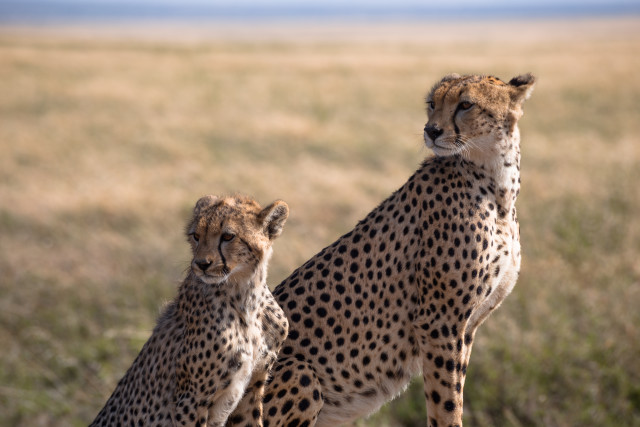-
How Family Planning Can Help Save Cheetahs
June 20, 2018 By Wilson Center Staff
Conservationists and development practitioners may not have always seen eye to eye, but a new partnership between a cheetah conservation charity and a network of reproductive health NGOs is making the case for why these groups need to work more closely together.
The 2030 Agenda for Sustainable Development calls for greater integration and collaboration among all development sectors, including actors working in the health and environment spheres. The intersection of those two sectors is a particular challenge in Africa, where the population is projected to quadruple to more than 4 billion by 2100. The boom will put enormous pressure on dwindling natural resources, negatively impacting wildlife and the environment.
Rural areas—where family planning and medical services are least accessible, and fertility rates highest—will likely face the greatest impact on natural resources. An estimated 214 million women in lower-income countries want effective contraception but are unable to access it, and there is an estimated $20 billion annual funding gap for reproductive health services in developing countries. Furthermore, there is a correlation between countries with the highest unmet need — as identified by the Family Planning 2020 campaign—and the largest areas of wilderness, as well as iconic and endangered species.
As a result, there is an “utterly obvious geographical overlap” in the areas of most concern to conservationists and to reproductive health advocates, according to David Johnson, chief executive officer of the Margaret Pyke Trust, which runs the Population & Sustainability Network, a group of NGOs working to promote reproductive rights for sustainable development. To date, however, the overwhelming majority of funding is still going toward single sector interventions.
Johnson is working to raise awareness and attract funding for integrated population, health, and environment—or PHE—programs, combining improvements in family planning provision with environmental conservation and natural resource management, in order to simultaneously improve health and conservation outcomes.
“When population growth impacts the health of local ecosystems, and when communities rely on those ecosystems for their food and water security, and sustainable livelihoods, barriers to people accessing family planning services are both a health and conservation issue,” Johnson explained.
Continue reading on Devex.
Learn more about population, health, and environment programs on the New Security Beat.
Sources: Devex, Guttmacher Institute, Family Planning 2020, Margaret Pyke Trust, Population and Sustainability Network, UNICEF, United Nations
Photo Credit: Mother and Child Serengeti Cheetah, December 2016, courtesy of Alex Berger
 A Publication of the Stimson Center.
A Publication of the Stimson Center.



